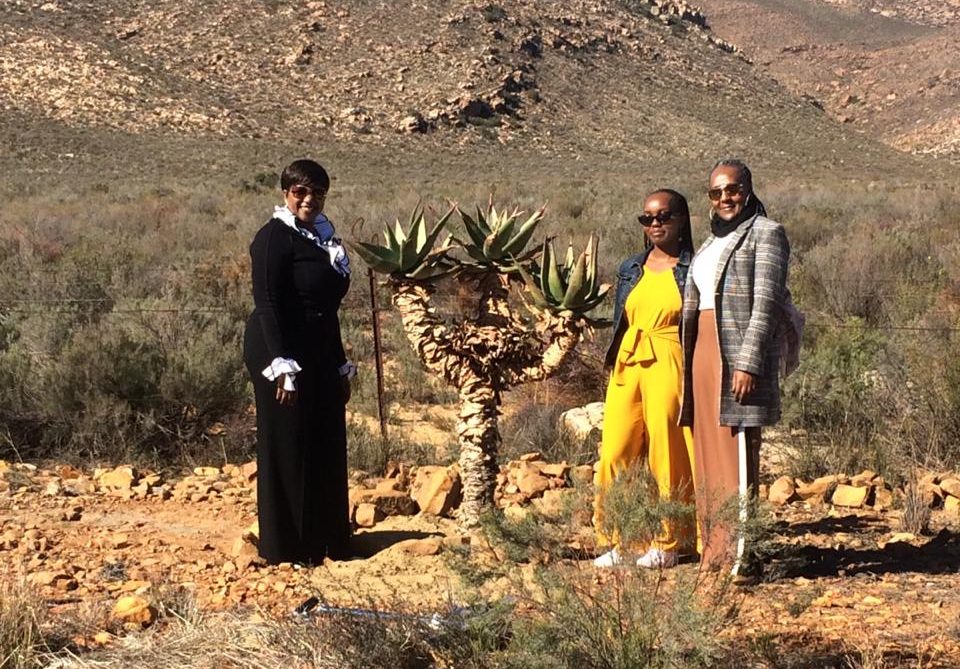Honouring Thembekile Mandela
Planting a Tree in Honour of Madiba Thembekile Mandela
28 December 2023
On a somber Sunday, July 13, 1969, tragedy struck along the N1 in Touws River, claiming the life of Madiba Thembekile Mandela, the eldest son of former South African President Nelson ‘Madiba’ Mandela. Upon his release in 1990, one of Nelson Mandela’s first acts was to visit Touws River, standing at the site where the accident occurred, seeking closure on the loss of his cherished son.
In tribute to Nelson Mandela’s visit and in remembrance of Thembekile’s passing, Ndilekha Mandela and Nandi Mandela, Thembekile’s daughters, undertook a meaningful act. They planted a significant symbol of life and resilience—a unique indigenous aloe tree—in front of Loganda Lodge, marking the scene of the accident.
Honouring Madiba Thembekile Mandela
Madiba Thembekile Mandela, who was named after his father, former South African President Nelson ‘Madiba’ Mandela, passed away on July 13, 1969, in a tragic motor vehicle accident along the N1, in Touws River. As the eldest son of Nelson Mandela, Thembekile Mandela was close to his father, who, at the time of his passing, was imprisoned at Robben Island.
While in prison, former President Nelson Mandela was never allowed to attend the burial of Thembekile Mandela, and one of the first things he did after his release in 1990 was to travel to Touws Rivier, to come and stand at the site where the accident occurred, and to try find closure on the death of his beloved son.
We know that Nelson Mandela visited the Loganda Hotel (Now Called Loganda Karoo Lodge) when he came to the town in 1990. In tribute to Nelson Mandela’s visit and in remembrance of Thembekile’s passing, Ndilekha Mandela and Nandi Mandela, Thembekile’s daughters, undertook a meaningful act. They planted a significant symbol of life and resilience—a unique and indigenous aloe tree—in front of Loganda Lodge, marking the scene of the accident while paying tribute to their grandfather’s visit (Nelson Mandela) nearly thirty years prior.
Planting an Aloe Tree at the Scene of the Accident
The decision to plant an aloe tree was deliberate, representing not only Thembekile’s memory but also honouring the four lives lost on that tragic Sunday, July 13, 1969. Special permission from the South African National Roads Agency Limited (SANRAL) was secured to ensure the tree’s placement within the road reserve.
While the tree serves as a poignant memorial on the side of the road, SANRAL regulations forbid any stone or wooden monuments, such as the ‘Ukubek ‘iletye’ from taking place in the road reserve—as it could lead to another accident. Therefore, the official stone memorial for Thembekile Mandela now stands solemnly in the Gideon Joubert Memorial Park, in Touwsrivier, South Africa.
The aloe tree, planted by Ndilekha and Nandi Mandela, stands as a unique and living tribute. With three heads, it symbolically represents the three families affected by the tragic accident. While details surrounding the incident remain shrouded in mystery, this memorial tree serves as a poignant reminder of the lives lost—Madiba Thembekile Mandela, Christina Klaasen, Irene Simelane, and Angelo Egidio.

